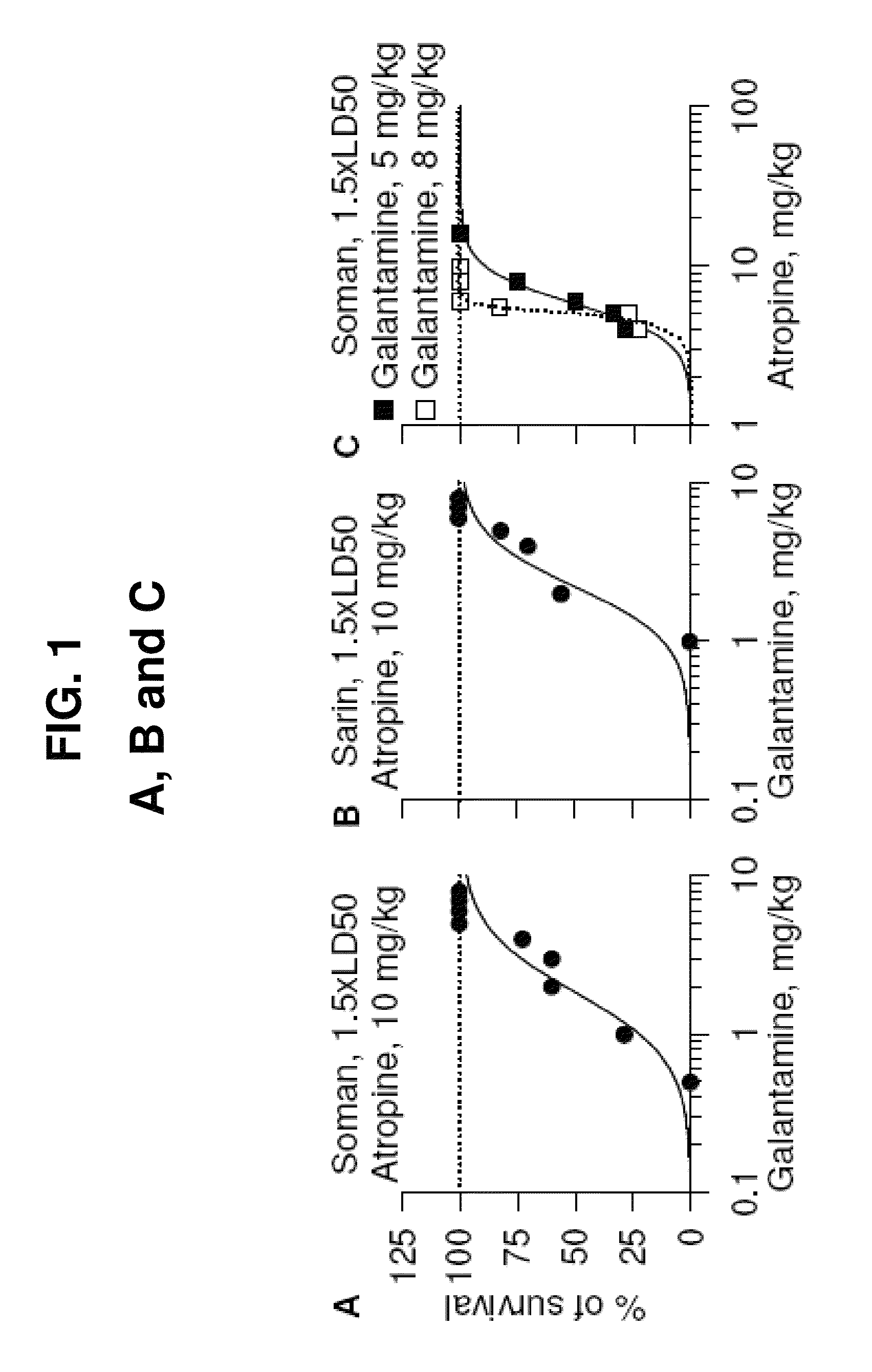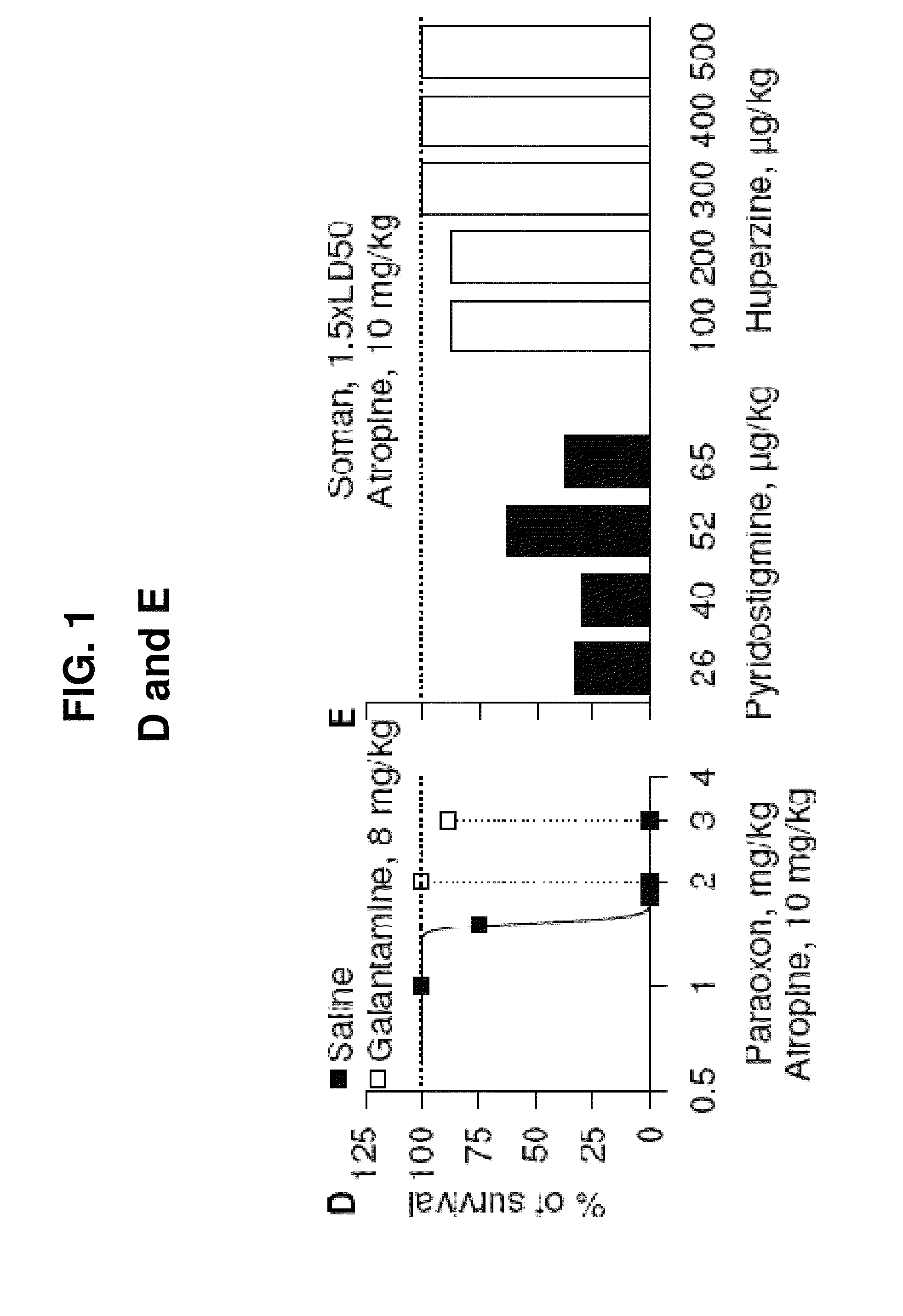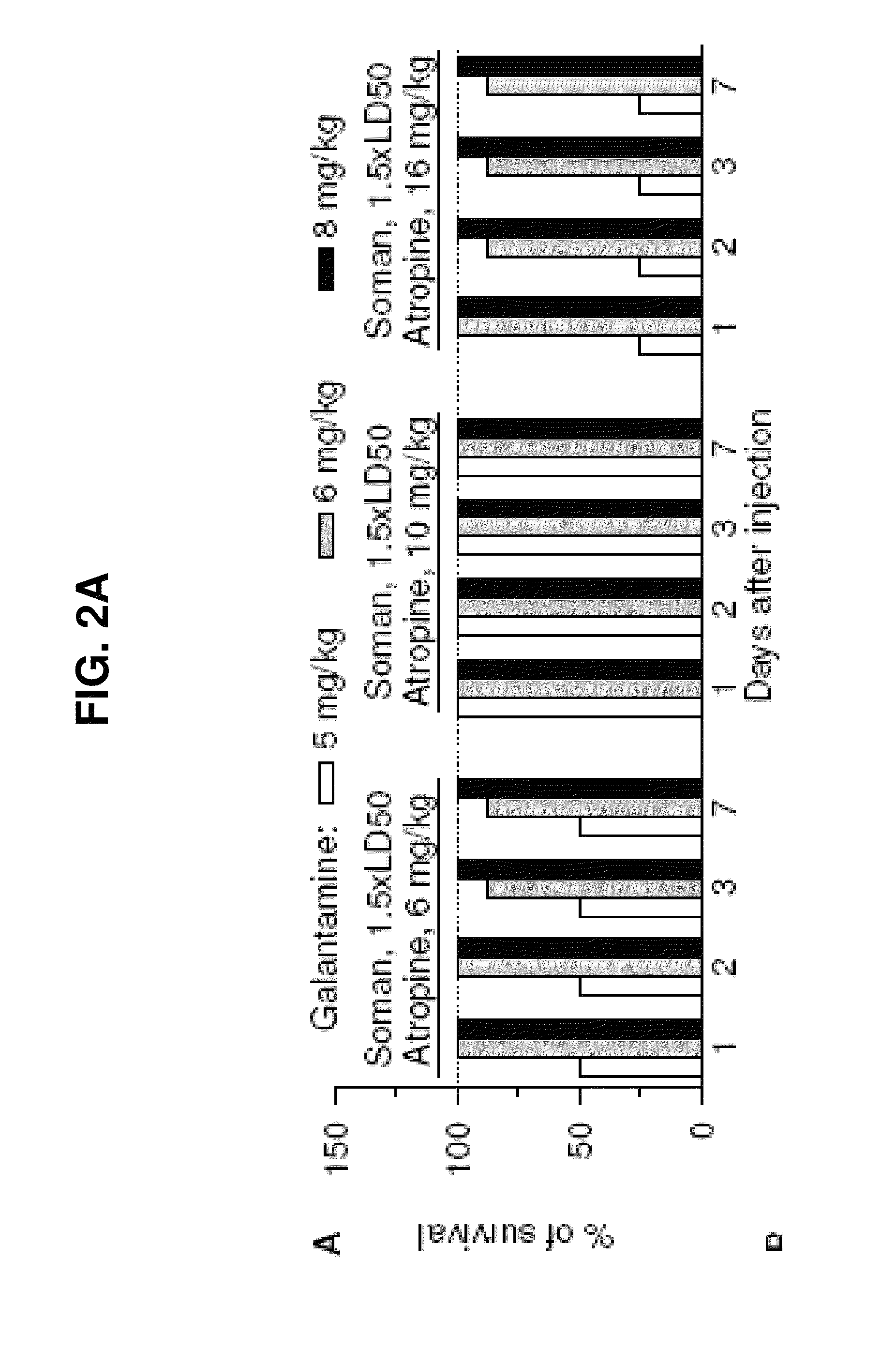Method of treating organophosphorous poisoning
a technology of organophosphorus and poisoning, applied in the direction of biocide, anti-noxious agents, drug compositions, etc., can solve the problems of increasing the accidental poisoning of farmers and gardeners, severe skeletal muscle fasciculations and subsequent weakness, and the use of nerve agents was catastrophi
- Summary
- Abstract
- Description
- Claims
- Application Information
AI Technical Summary
Benefits of technology
Problems solved by technology
Method used
Image
Examples
example 1
Materials and Methods
[0127]Animal Care and Treatments.
[0128]Male albino guinea pigs [Crl(HA)Br; Charles River Laboratories, Wilmington, Mass.] weighing 350-420 g (5-6 weeks old) were used. Galantamine, pyridostigmine, or huperzine were injected in one hindlimb, and atropine was injected in the other. The nerve agents, diluted in sterile saline, and paraoxon, diluted in DMSO, were injected s.c. between the shoulder blades of the animals. All injections (about 0.5 ml / kg) were performed by using disposable tuberculin syringes with 25- to 26-gauge needles. Handling and disposal of nerve agents were according to the rules set forth by the U.S. Army. All conditions for animal maintenance conformed to the regulations of the Association for Assessment and Accreditation of Laboratory Animal Care, complied with the standards of the Animal Welfare Act, and adhered to the principles of the 1996 Guide for the Care and Use of Laboratory Animals (Institute of Laboratory Animal Resources (1996) Gui...
example 2
Pre-Exposure Administration of Donepezil, Rivastigmine and (±) Huperzine-A
[0138]Donepezil, rivastigmine and (±)Huperzine-A are reversible inhibitors of both central and peripheral AChE. We tested these drugs as potential antidotes for OP intoxication using a 1.5×LD50 soman challenge. Male guinea pigs (35-40-days old) received an i.m. injection of a given dose of one of the test drugs, followed 30 minutes later by an s.c. challenge with 1.5×LD50 soman (42 μg / kg), and 1 minute later by an i.m. injection of atropine sulfate (10 mg / kg). Each experimental group consisted of 8-10 guinea pigs. Full protection against the lethality of 1.5×LD50 soman was achieved when the animals received 3 mg / kg donepezil 30 minutes before the OP challenge, provided that atropine (10 mg / kg, im) was administered 1 minute after the nerve agent. FIG. 12. Importantly, we discovered that the therapeutic doses of donepezil are by themselves toxic. The data in FIG. 13 showed that 3 mg / kg i.m. donepezil by itself d...
example 3
[0145]Soman and Sarin Selectively Inhibits RBC Acetylcholinesterase 2-fold More Potently Than Brain Acetylcholinesterase In vitro studies have reported that in humans, as in guinea pigs, brain acetylcholinesterase is less sensitive than RBC acetylcholinesterase to inhibition by galantamine (Thomsen et al., Eur J Clin Chem Clin Biochem 29: 487, 1991). Permeability through the blood-brain-barrier is not the factor that determines the differential inhibition of RBC and brain acetylcholinesterase by galantamine, because this phenomenon is observed in extracts that are exposed in vitro to increasing concentrations of galantamine (Albuquerque et al., PNAS, 2006). The results below show that show that acetylcholinesterase activity in brain and RBC of guinea pigs is also differentially sensitive to the nerve agents soman and sarin. Using the Ellman assay, we have determined that soman and sarin inhibit RBC acetylcholinesterase 2-fold more potently than brain AChE. (Biochem Pharm 7: 88, 1961...
PUM
| Property | Measurement | Unit |
|---|---|---|
| spin-to-spin relaxation time | aaaaa | aaaaa |
| thick | aaaaa | aaaaa |
| period of time | aaaaa | aaaaa |
Abstract
Description
Claims
Application Information
 Login to View More
Login to View More - R&D
- Intellectual Property
- Life Sciences
- Materials
- Tech Scout
- Unparalleled Data Quality
- Higher Quality Content
- 60% Fewer Hallucinations
Browse by: Latest US Patents, China's latest patents, Technical Efficacy Thesaurus, Application Domain, Technology Topic, Popular Technical Reports.
© 2025 PatSnap. All rights reserved.Legal|Privacy policy|Modern Slavery Act Transparency Statement|Sitemap|About US| Contact US: help@patsnap.com



